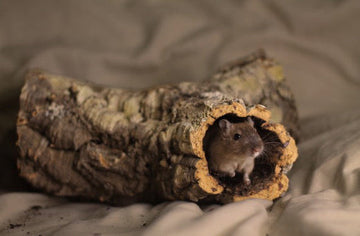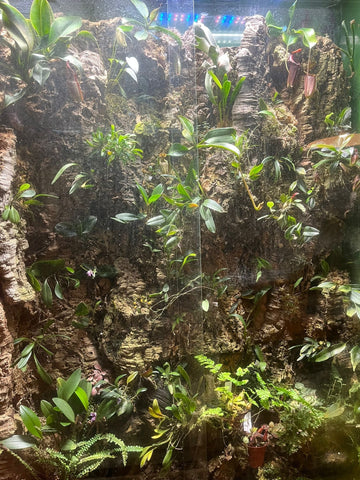How to Create the Ultimate Reptile Hideout with Natural Materials
By Corkbark UK on Nov 20, 2024

Creating the ultimate reptile hideout is about more than just aesthetics—it’s about ensuring your pet feels secure, enriched, and healthy. In the wild, reptiles and amphibians seek out natural shelters like hollow logs, caves, and burrows for protection and comfort. By replicating these conditions, you can significantly enhance your pet’s quality of life.
The Benefits of Using Natural Materials
Natural materials provide several benefits over artificial alternatives. They mimic the textures and shapes of a reptile’s natural habitat, helping your pet feel at ease.
-
Cork Hides: These are perfect for creating sheltered spaces. Cork is lightweight, easy to clean, and naturally antimicrobial, which helps maintain hygiene.
-
Cork Bark Branches: Ideal for creating tunnels, climbing areas, and shaded hideouts. Their versatility makes them a staple in any naturalistic enclosure.
-
Cork Granules: A soft, natural substrate that works well for burrowing reptiles or as a base layer for layered hideouts.
-
Grapewood Vines: These add climbing opportunities and visual interest while blending seamlessly with natural décor.
Designing the Perfect Reptile Hideout
When planning your reptile’s hideout, think about functionality and placement:
-
Temperature Regulation: Position hideouts in both warmer and cooler areas of the enclosure to allow your reptile to thermoregulate effectively.
-
Layered Shelters: Combine cork hides with climbing branches to create multi-level hiding spots, catering to arboreal and terrestrial species.
-
Secure and Stable: Ensure all materials are securely placed to avoid shifting or collapsing, which could harm your reptile.
Why Cork Hides Are a Game-Changer
Cork hides are particularly valuable because of their unique properties:
-
Durability: They last longer than many other materials, resisting wear and tear from moisture and reptile activity.
-
Insulation: Cork helps maintain consistent temperatures within the hideout, keeping reptiles comfortable.
-
Eco-Friendly: Cork is a sustainable material, making it a better choice for environmentally conscious reptile owners.
Customising Your Reptile Hides for Different Species
Different species of reptiles and amphibians have unique needs, and it’s essential to tailor their hideouts accordingly:
-
Burrowing Species: For reptiles that like to dig, cork granules combined with low-profile hides create an ideal environment for burrowing.
-
Climbing Species: Arboreal species, such as geckos or tree frogs, benefit from cork bark branches and vines that allow them to climb and retreat to elevated hideouts.
-
Moisture-Loving Species: Amphibians, like frogs and newts, need humid microclimates. Cork hides, combined with moss or damp substrates, can help maintain the necessary humidity levels.
Integrating Hideouts with Enclosure Décor
A hideout doesn’t have to be a standalone feature; it can blend seamlessly into the overall design of the enclosure. Using materials like cork bark, you can create a cohesive and naturalistic setup that looks and feels like the wild. Combine hides with naturalistic décor such as live plants, rocks, and water features to create a complete ecosystem.
Other Essentials for Your Reptile’s Well-Being
A great hideout is just one part of creating a healthy environment. Don’t forget to:
-
Provide Enrichment: Include climbing opportunities like vines and branches to keep your reptile active and engaged.
-
Monitor Humidity and Temperature: Ensure these are set to the correct levels for your reptile’s species.
-
Ensure Privacy: Place hideouts in low-traffic areas to minimise stress.
By using natural materials like cork hides, cork bark branches, and grapewood vines, you can create a functional, naturalistic hideout that enhances your reptile’s comfort and well-being. It’s not just about a place to hide—it’s about building a sanctuary that meets their instinctual needs and keeps them thriving in their enclosure.




